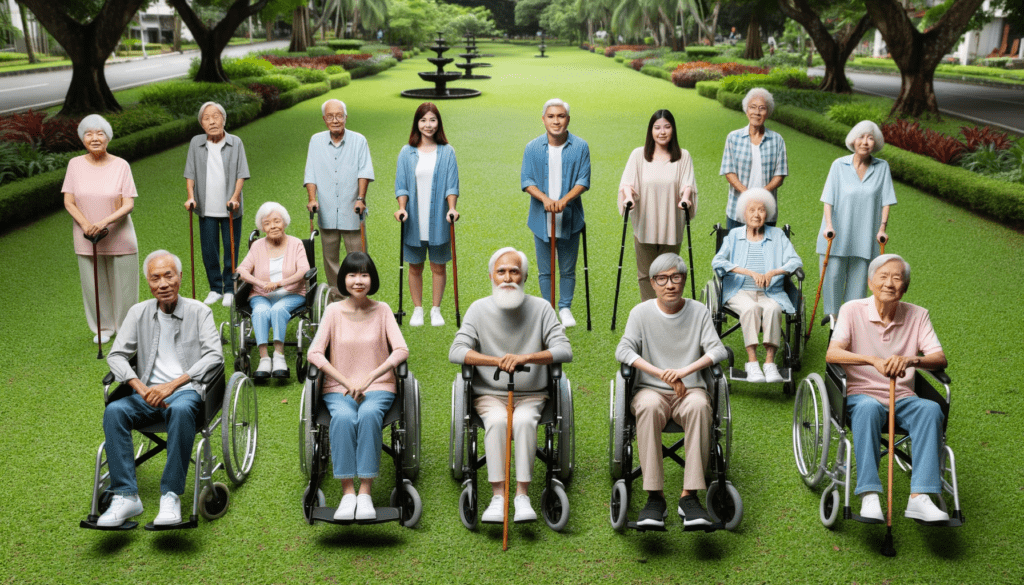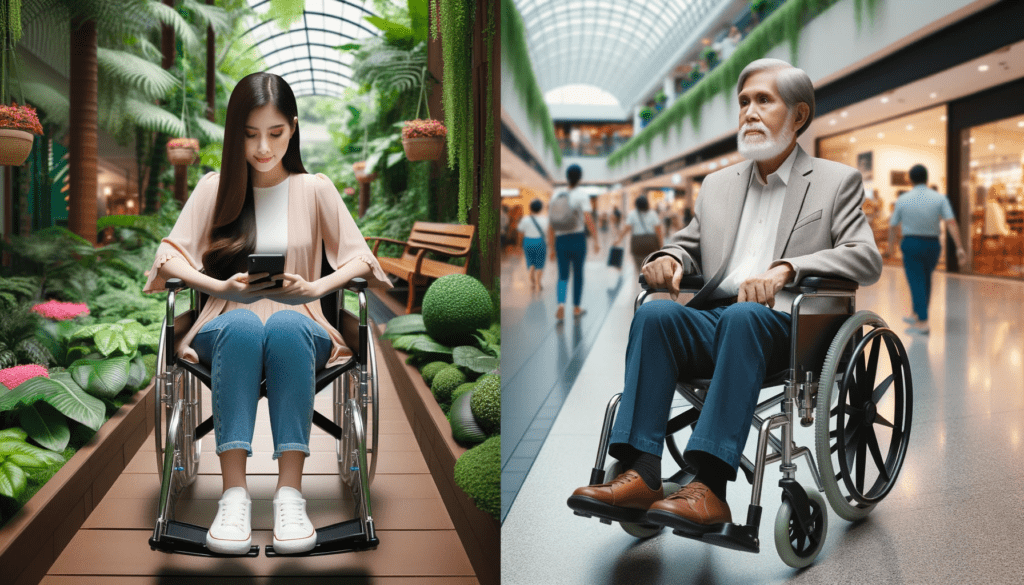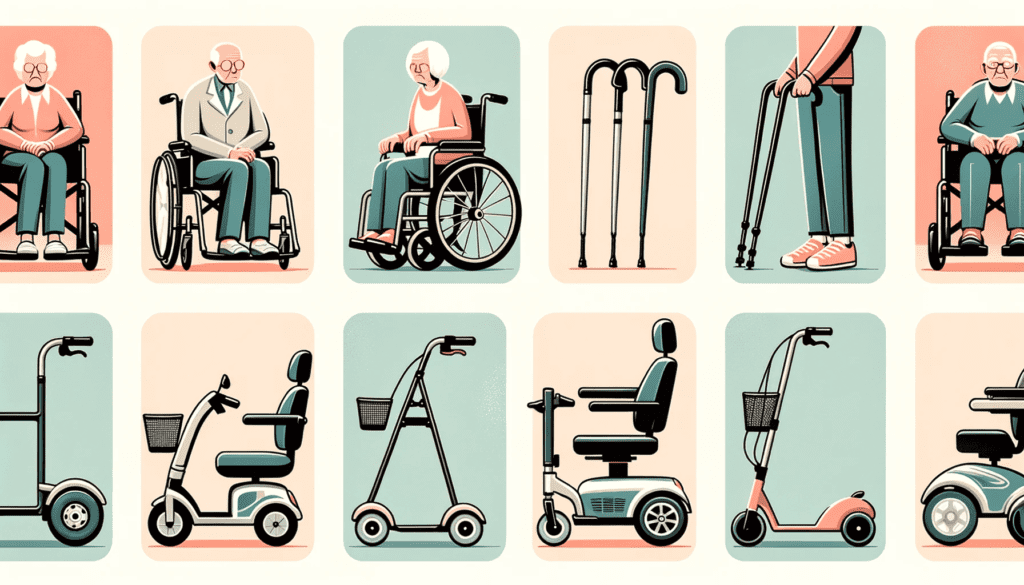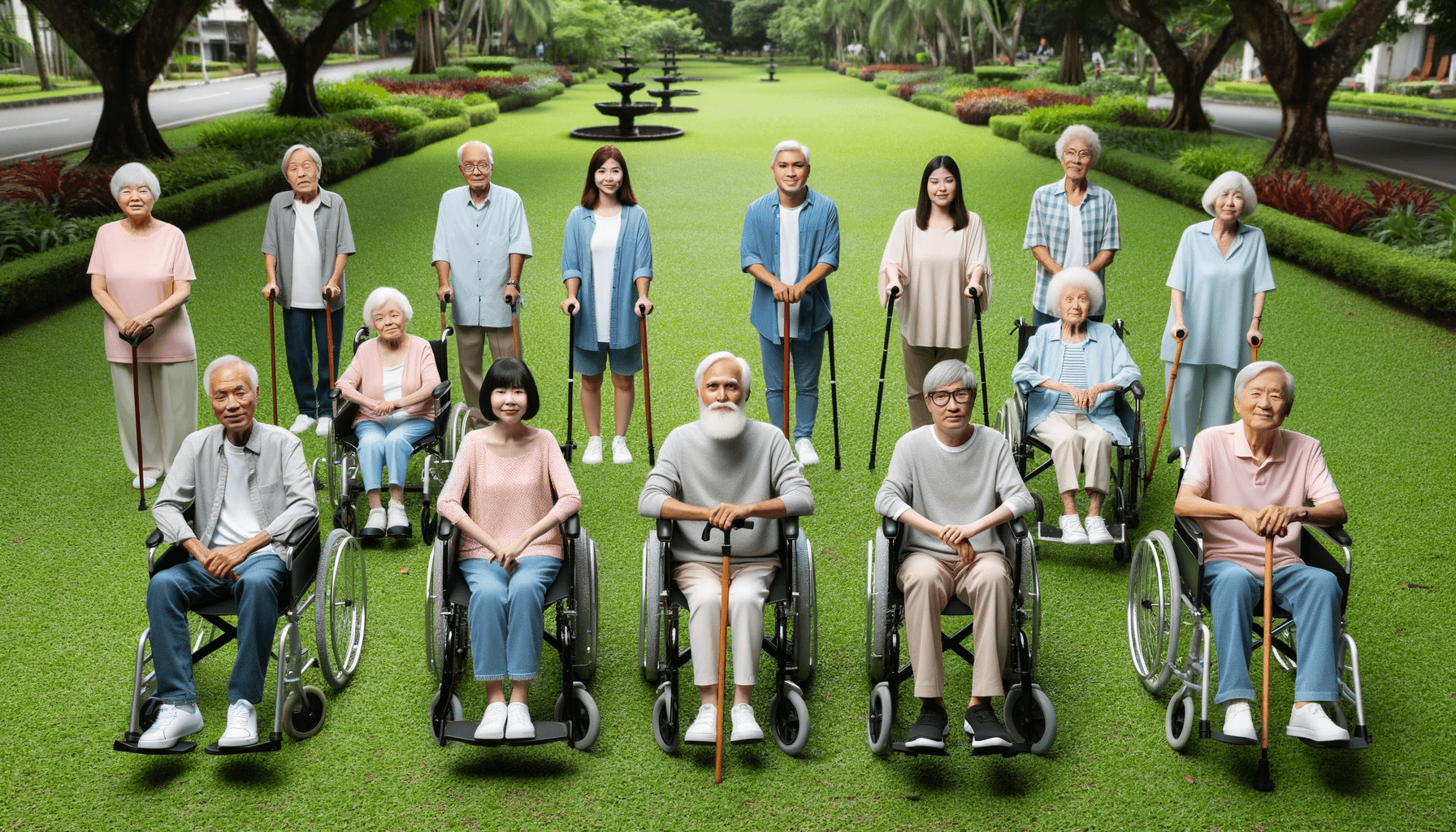Mobility Aids in 2024 – A Comprehensive Guide

Introduction on Mobility Aids
Mobility Aids is a cornerstone of independence in daily living, but this can often be compromised due to aging, injuries, or chronic conditions. Fortunately, the development of a wide range of mobility solutions such as walking canes, wheelchairs, and other assistive devices has redefined what it means to be mobile. This article offers an in-depth look at the various types of mobility aids, their features, and how they can significantly enhance the quality of life for individuals with mobility challenges.
The Essence of Mobility Aids
Foster Independence: More than Just Support
Mobility aids are more than just physical support—they are assistive devices designed to enhance self-reliance and independence. From basic walking canes to technologically advanced mobility scooters, these tools empower individuals by offering them the stability and support they need to participate in daily activities with less physical strain. This fosters a heightened sense of self-reliance and improves the overall quality of daily living.
Enhance Safety: From Non-Slip Mats to Stability Sensors
One of the primary functions of mobility aids is to enhance safety by reducing the risk of falls and other accidents. These tools employ various features such as non-slip grips, durable materials, and stability sensors to ensure a safer ambulatory experience. Moreover, modern aids come with additional safety locks and brake systems to ensure maximum safety while in use.
Walking Canes: A Pillar of Support for Independent Movement

Types of Walking Canes: Exploring Single-Point to Quad Canes
Walking canes are a vital tool in the realm of mobility solutions and come in various types, each designed to cater to specific support and stability needs.
Single-Point Canes
These are the most traditional and widely-used canes. They have a single point that touches the ground and are ideal for those who need minor support for balance. Often made of lightweight materials like aluminum, these canes are easy to carry and maneuver.
Offset Canes
The design of offset canes redistributes weight from the wrist to the forearm, offering enhanced stability. These are particularly useful for individuals with wrist pain or arthritis.
Quad Canes
Equipped with four small feet that provide a wide base, quad canes offer significant stability and are excellent for those with serious balance issues or muscle weakness. They can stand on their own, offering an extra convenience factor.
Fritz and Derby Canes
These canes focus on hand comfort. While the Fritz handle is designed to accommodate finger placement more naturally, the Derby handle provides a full curve that offers robust support and is often padded for extra comfort.
Customization and Comfort: Taking User Experience to the Next Level
Today’s walking canes are far removed from their simplistic ancestors. They incorporate various features focusing on comfort, stability, and custom-fit experience.
Ergonomic Handles
Ergonomic handles are designed to reduce hand strain, distributing weight more evenly across the palm. This design significantly decreases the risk of developing hand or wrist issues over prolonged use.
Adjustable Heights
Adjustable-height canes can be lengthened or shortened to fit the user perfectly, which is essential for providing the correct level of support. An incorrectly sized cane can lead to posture issues and even increase the risk of falls.
Material Choices
From lightweight aluminum to traditional wood, the material of the cane not only affects its weight but also its durability and comfort. Some even come with reinforced frames for those requiring weight-bearing support.
Non-Slip Grips and Tips
Ensuring safety while walking, many modern canes feature non-slip rubber tips for enhanced grip on various terrains. Some even offer interchangeable tips for users who frequently transition between different types of surfaces.
Foldability and Portability
For the modern, on-the-go individual, foldable canes can be collapsed and stored in a bag when not in use. These are ideal for travelers or those who only need a cane for specific activities.
By incorporating features like ergonomic design, adjustable heights, and material customization, today’s walking canes go beyond basic functionality. They are designed to offer a highly personalized, comfortable, and user-friendly ambulatory experience.
Wheelchairs: The Seat of Independence and Convenience

Manual vs. Electric Wheelchairs: Navigating the Choices Based on Lifestyle Needs
The choice between manual and power-operated wheelchairs is a pivotal one, often guided by an individual’s physical capabilities and lifestyle needs. Each type has its unique set of advantages and considerations.
Manual Wheelchairs
Manual wheelchairs are propelled by the user, offering a hands-on approach to mobility. They are often lighter in weight and more compact, making them easier to transport.
- User-Friendly Maneuverability: These wheelchairs usually offer more control when navigating tight spaces, ideal for indoor use.
- Portability: Generally more foldable and lightweight, they are easier to store and are a better choice for those who travel frequently.
- Exercise Benefits: The physical exertion required can offer some level of physical therapy, aiding in muscle tone and circulation.
Electric Wheelchairs
On the other hand, electric or battery-powered wheelchairs offer an easier mobility experience but often come at a higher cost and with additional weight.
- Ease of Use: Electric wheelchairs require less physical effort, making them suitable for those with severe mobility limitations.
- Feature-Rich: These often come with more advanced features like reclining seats, swivel capabilities, and advanced brake systems.
- Terrain Adaptability: Battery-powered models are often better suited for uneven terrains, as they typically have more robust wheels and motor power.
Adaptability and Features: Enhancing User Experience from Reclining Seats to All-Terrain Wheels
Today’s wheelchairs are far from one-size-fits-all; they come equipped with a multitude of features aiming to improve comfort, safety, and functionality.
Reclinable Seats
For individuals who spend extended periods in their wheelchairs, reclinable seats offer the opportunity for better posture support and pressure distribution, thus aiding in the prevention of sores and improving overall comfort.
Adjustable Footrests
Footrests can often be adjusted in height and angle, catering to individual comfort and therapeutic needs. For instance, elevating the legs can improve circulation and alleviate swelling.
Terrain Wheels
Terrain wheels provide enhanced mobility across different types of surfaces, be it grass, gravel, or uneven paths. This feature is particularly useful for those who enjoy outdoor activities and require a wheelchair that can easily adapt to various terrains.
Additional Accessories
Many modern wheelchairs also offer add-ons like padded armrests, safety locks, and custom-fit cushioning, which serve to enhance the user experience even further.
By focusing on adaptability and the inclusion of user-centric features, modern wheelchairs have evolved into highly personalized mobility solutions. Whether it’s the convenience of electric operation or the compactness of a manual wheelchair, these adaptive equipment pieces serve diverse lifestyle needs and physical capabilities, contributing to enhanced quality of life.
Expanding Horizons: Beyond Canes and Wheelchairs
Walkers and Rollators: The Intersection of Versatility and Supportive Design
Walkers and rollators offer an additional layer of stability and support beyond what canes provide, making them an excellent choice for individuals who need more significant support but still want to maintain some level of independence in their mobility.
Walkers: Traditional Stability and Support
Walkers, often referred to as ‘zimmer frames,’ provide a stable framework to lean on while walking. They are particularly useful for people who require more support than a cane can offer but do not require a wheelchair.
- Height Adjustability: Many walkers offer height-adjustable handles, allowing for a customized user experience.
- Non-Slip Grips: To enhance safety, the handles often come with non-slip grips, reducing the risk of accidents.
- Foldable Design: For ease of transport and storage, many walkers are foldable and can easily fit into car trunks or small spaces.
Rollators: The Modern Take on Walkers
Rollators are essentially walkers with wheels. They are designed for those who can walk but need some assistance with balance and stability.
- Cushioned Seats: Some rollators come with cushioned seats to provide a convenient resting place when needed.
- Safety Locks and Brake Systems: To enhance safety, rollators often feature advanced brake systems and safety locks.
- Storage Compartments: Many models come with built-in storage compartments or baskets, adding an element of convenience for the user.
Mobility Scooters: Pioneering the Future of Assistive Mobility Solutions
Mobility scooters are revolutionizing the landscape of assistive devices with their blend of advanced features and user-centric design. They provide an excellent alternative for individuals who find wheelchairs to be limiting but still require mobility assistance.
Lightweight and Portable
One of the most appealing features of mobility scooters is their lightweight materials and foldable frames. This portability makes it easier to take them wherever you go, be it shopping or a day out in the park.
Advanced Stability Features
Stability sensors and traction wheels are often integrated into the design to ensure safe and smooth rides. Some models even come with advanced suspension systems for added comfort on uneven terrains.
User-Friendly Controls
Operating a mobility scooter is generally simple, with user-friendly controls that can be easily managed. Features such as adjustable footrests and ergonomic grips further contribute to a comfortable riding experience.
Battery-Powered Convenience
Most mobility scooters are battery-powered, offering a hassle-free, power-operated experience. The batteries are usually easy to charge and provide sufficient range for daily activities.
Whether you’re considering a walker, rollator, or mobility scooter, these mobility solutions offer various features designed to enhance independence and improve the quality of life. The choice ultimately depends on individual needs, physical capabilities, and lifestyle preferences. By understanding the unique advantages and features of each type of mobility aid, individuals can make an informed decision that best suits their specific requirements.

Selecting the Right Aid: An Assessment-Based Approach
Choosing the right mobility aid requires a comprehensive evaluation of the individual’s mobility level, lifestyle, and personal preferences. This should ideally involve consultation with healthcare professionals, who can recommend therapeutic devices best suited for the person’s specific needs.
Conclusion
Mobility aids are a blend of functional design and supportive features that significantly enhance the quality of life for individuals facing various mobility challenges. Whether it’s a walking cane offering steady support or a wheelchair providing seamless mobility, these aids go beyond being mere devices—they serve as companions in the quest for an accessible and independent life. By understanding the diverse range of mobility aids and their individual features, individuals and caregivers can make well-informed decisions, welcoming a life enriched by greater mobility and freedom.
Helpful Resources:
https://www.ada.gov/topics/mobility-devices/

